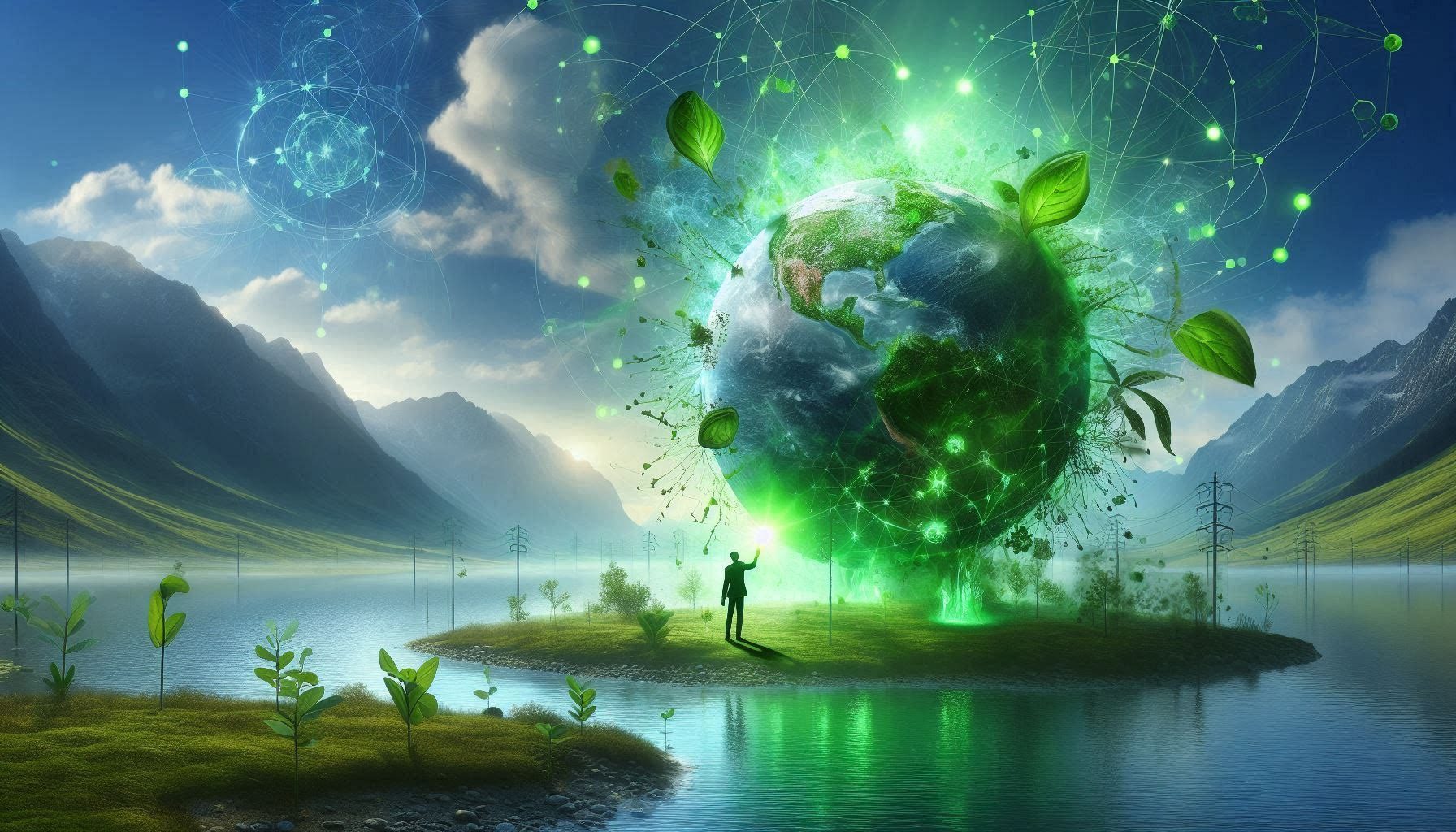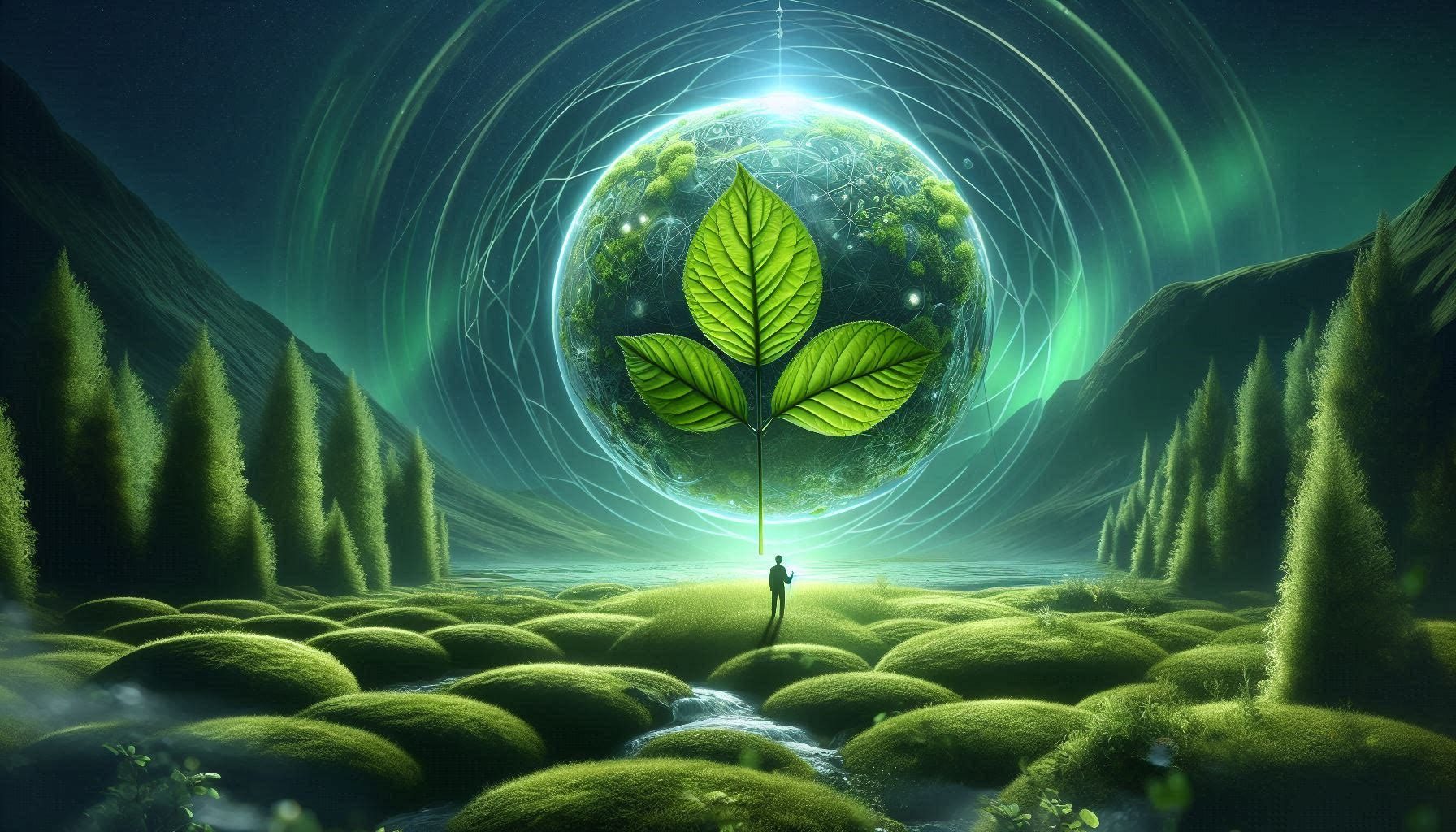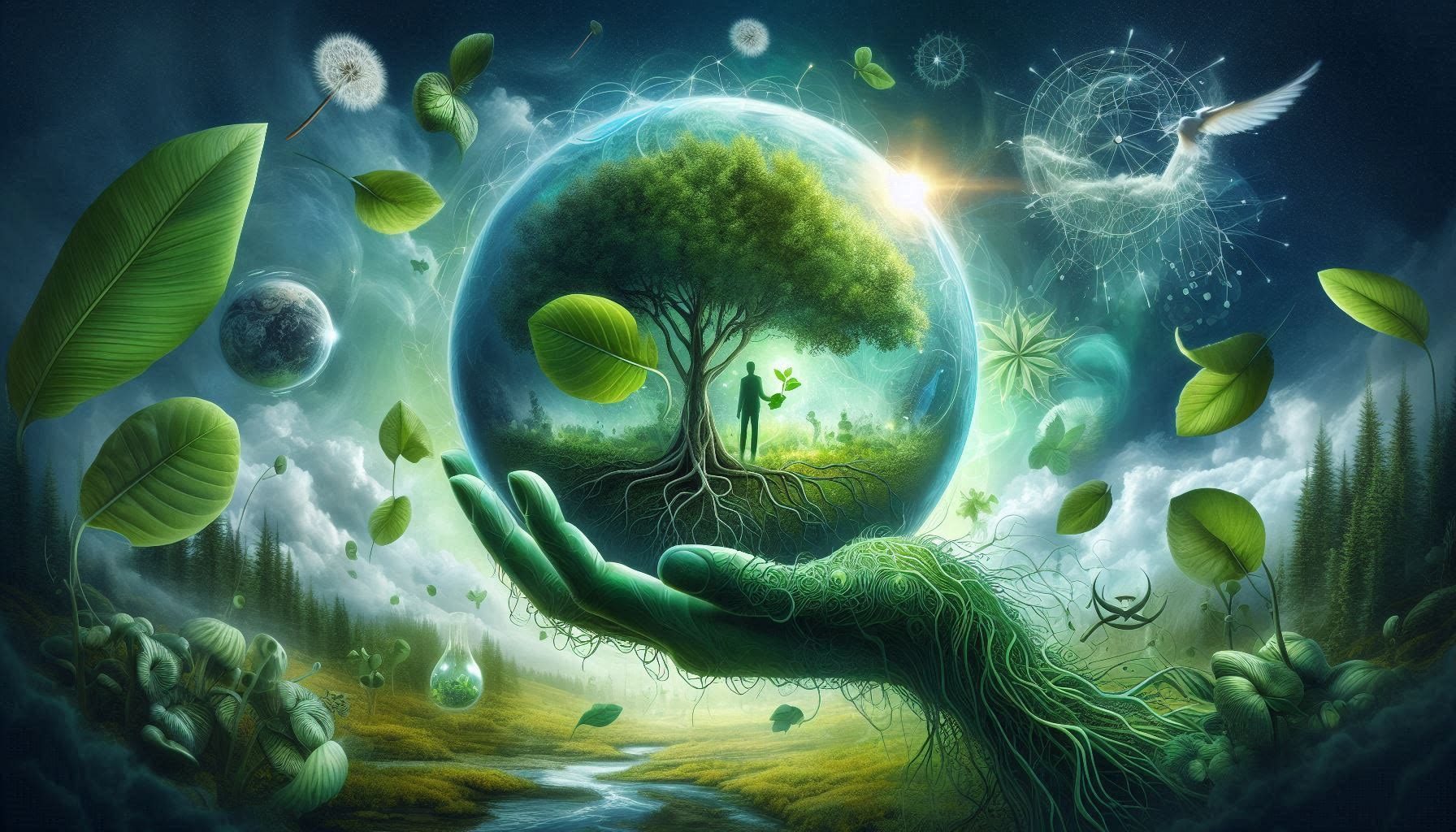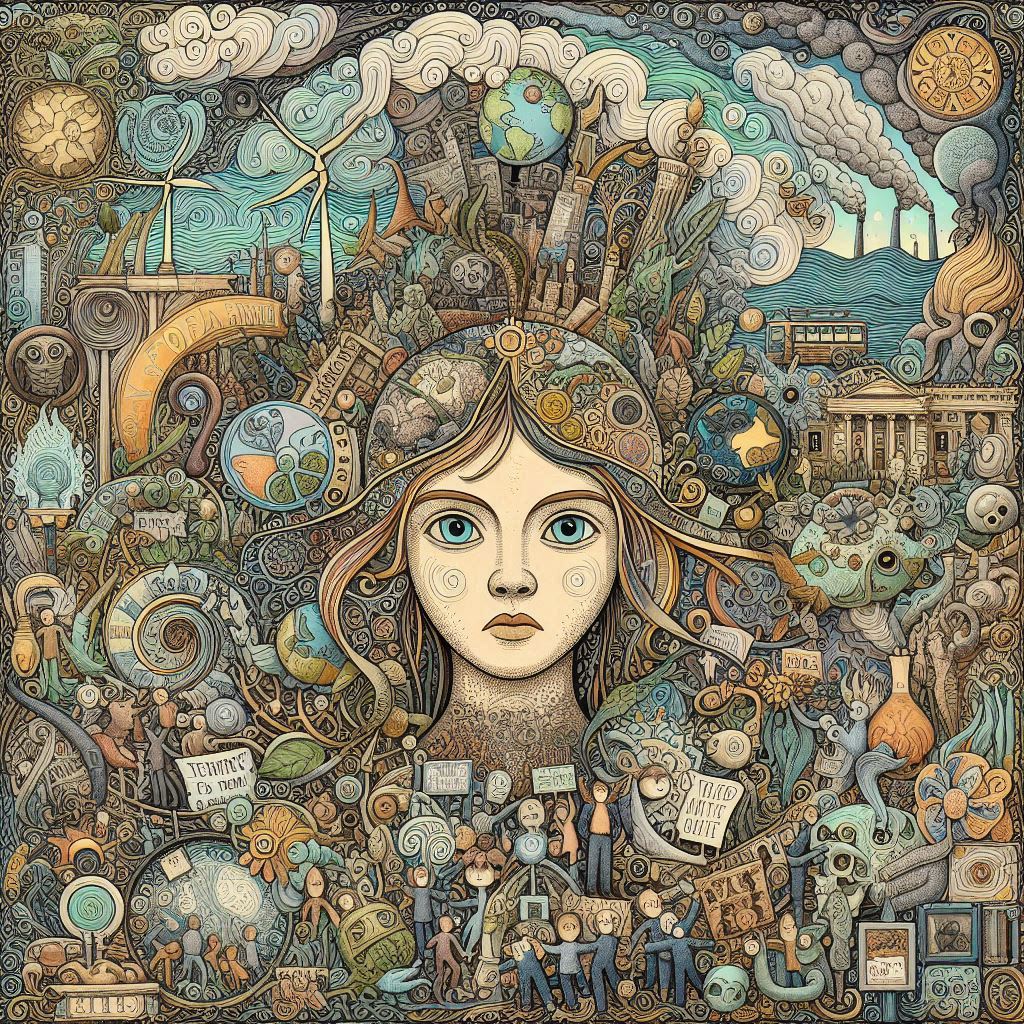
Understanding Chlorophyll and Its Environmental Impact
Chlorophyll, the vibrant green pigment found in plants, algae, and cyanobacteria, is nothing short of a miracle molecule. It plays a central role in the process of photosynthesis, enabling plants to harness energy from sunlight and convert it into a form that sustains life on Earth. But what exactly is chlorophyll, and why is it so crucial from an environmental standpoint?
What is Chlorophyll?
Chlorophyll is an important structure in plant life. It is a pigment located in the chloroplasts of plant cells. It is responsible for the green color of plants and is essential for photosynthesis, the process by which plants convert light energy into chemical energy.
There are two main types of chlorophyll found in plants
Chlorophyll a
Chlorophyll b
These pigments absorb light most efficiently in the blue and red wavelengths, reflecting green light, which is why plants appear green to our eyes.
The Role of Chlorophyll in Photosynthesis
Chlorophyll absorbs sunlight and uses the energy from the sunlight to convert carbon dioxide and water into glucose & oxygen. This process not only provides the energy necessary for plant growth but also produces oxygen, which is essential for the survival of most life forms on Earth.

Environmental Significance of Chlorophyll
——————————
Oxygen Production
One of the most significant contributions of chlorophyll to the environment is the production of oxygen. Through photosynthesis, plants release oxygen into the atmosphere, which is vital for the respiration of animals and humans. This oxygen production helps maintain the balance of gases in the atmosphere, supporting life on Earth.
Carbon Dioxide Absorption
Chlorophyll plays a crucial role in the carbon cycle by absorbing carbon dioxide from the atmosphere. Forests, which are rich in chlorophyll-containing plants, act as carbon sinks, absorbing large amounts of carbon dioxide and storing it in their biomass.
Foundation of Food Webs
Chlorophyll is at the base of the food chain. Plants, algae, and phytoplankton, all of which contain chlorophyll, are primary producers. They convert sunlight into energy that is then passed through the food web, supporting herbivores, carnivores, and omnivores. Without chlorophyll, the entire food web would collapse, leading to a breakdown of ecosystems.
Soil Health
Plants with chlorophyll contribute to soil health by adding organic matter through leaf litter and root exudates. This organic matter improves soil structure, water retention, and nutrient availability, fostering a healthy environment for other plants and microorganisms.
Water Quality
Aquatic plants and algae, which contain chlorophyll, play a role in maintaining water quality. They absorb nutrients from the water, preventing excessive nutrient buildup that can lead to harmful algal blooms.

What Chlorophyll Does
Chlorophyll is a powerhouse molecule with several critical functions that sustain life on Earth.
Photosynthesis
The primary role of chlorophyll is to facilitate photosynthesis, the process by which plants, algae, and some bacteria convert light energy into chemical energy. Chlorophyll absorbs sunlight, particularly in the blue and red wavelengths, and uses this energy to transform carbon dioxide and water into glucose and oxygen. This process not only provides energy for the plant but also produces oxygen, which is essential for most life forms on Earth.
Energy Conversion
Chlorophyll acts as a catalyst in the conversion of light energy into chemical energy. This energy is stored in the form of glucose, which plants use for growth, reproduction, and other vital functions. The stored energy in plants is also transferred through the food web, supporting herbivores, carnivores, and omnivores.
Oxygen Release
During photosynthesis, chlorophyll helps split water molecules, releasing oxygen as a byproduct. The continuous production of oxygen by plants helps maintain the balance of gases in the atmosphere.
Carbon Dioxide Absorption
Chlorophyll plays a crucial role in absorbing carbon dioxide from the atmosphere. By absorbing carbon dioxide, plants act as carbon sinks, storing carbon in their biomass and helping to regulate the Earth’s climate.

Supporting Ecosystems
Chlorophyll-containing plants form the foundation of most ecosystems. They provide food and energy for a wide range of organisms, from tiny insects to large mammals. By supporting the base of the food web, chlorophyll ensures the stability and health of ecosystems.
Conclusion
Chlorophyll is more than just the green pigment that colors our world; it is a fundamental component of life on Earth. Through its role in photosynthesis, chlorophyll enables plants to convert sunlight into energy, produce oxygen, and absorb carbon dioxide. These processes are crucial for maintaining the balance of gases in the atmosphere, supporting food webs, and mitigating climate change. Chlorophyll’s impact extends to soil health and water quality, making it indispensable for the health of our ecosystems. By understanding and protecting the plants and organisms that rely on chlorophyll, we can ensure a sustainable and thriving environment for future generations.
Join the Conversation
We’d love to hear your thoughts on the incredible role of chlorophyll in our environment! How do you think we can better protect the plants and ecosystems that rely on this vital pigment? Share your ideas, experiences, and questions in the comments below. Let’s work together to promote a healthier, more sustainable planet. 🌿🌍
#Chlorophyll #Photosynthesis #GreenEnergy #OxygenProduction #CarbonCycle #ClimateChange #SustainableLiving #EcoFriendly #PlantLife #EnvironmentalImpact #NatureLovers #GreenPlanet #SaveTheEarth #Biodiversity #Ecosystem #SoilHealth #WaterQuality #CarbonSink #PrimaryProducers #FoodWeb #PlantScience #Botany #GreenRevolution #EcoAwareness #NatureScience #SustainableFuture #EarthDay #GoGreen #EnvironmentalScience #HealthyPlanet







La weekly Hi there to all, for the reason that I am genuinely keen of reading this website’s post to be updated on a regular basis. It carries pleasant stuff.
Good post. I am going through some of these issues as well..
It’s in fact very complicated in this full of activity life
to listen news on TV, so I only use world wide web for that purpose, and
take the most recent news.
I am regular visitor, how are you everybody?
This article posted at this website is in fact fastidious.
Hello there, You have done an incredible job.
I will definitely digg it and personally recommend
to my friends. I am confident they’ll be benefited from this site.
I am regular reader, how are you everybody? This piece of writing posted at this site is genuinely good.
What’s Taking place i’m new to this, I stumbled upon this
I’ve found It absolutely helpful and it has helped me out loads.
I am hoping to give a contribution & assist other customers like
its helped me. Good job.
Good post. I learn something new and challenging on sites I stumbleupon every day.
It’s always helpful to read through content from other authors
and use a little something from other web
sites.
I enjoy, lead to I discovered exactly what I used to be having a look for.
You’ve ended my four day long hunt! God Bless you man. Have a great day.
Bye
Does your website have a contact page? I’m having problems locating it but,
I’d like to send you an e-mail. I’ve got some creative
ideas for your blog you might be interested in hearing.
Either way, great blog and I look forward to seeing it expand over time.